Iceland: A road-tripper’s guide to The Land of Fire and Ice
Iceland is a road-tripping traveller’s dream. Some of the most wildly unique landscapes on the planet are found on this small island country that surrounds itself with the wild waters of The Greenland Sea, The Denmark Straight, The North Atlantic, and The Norwegian Sea. Being so remotely situated has led to a unique cultural and folkloric history that is inherently Scandinavian, but also uniquely Icelandic. It’s a goldmine of topographical diversity that will leave even the most seasoned of travellers in wonderment. It’s a land of glacier-topped volcanoes, thermal hot springs, steaming geysers, fairies and trolls (so the locals say), black sand beaches, epic Norse sagas, and some of the most beautiful rolling hills and mountain terrain to be found on earth.
For me, Iceland had always been the promised land. Being a common filming location for so many epic action and fantasy flicks, there were times on my 2-week Icelandic journey where I felt I was indeed on another planet. Barren red fields with steaming geysers, spongy green mossy mounds as far as the eye can see; Iceland’s topography feels like a blueprint for a science fiction landscape created in our wildest dreams. At the end of my 14-day adventure, it was tattooed into my consciousness that this is a country that has maintained a sense of wildness that cannot be fully absorbed or understood, let alone tamed… and the Icelanders like it that way.
Flying into Iceland’s main airport, Keflavik International, the first thing I did was hit up a store to buy a bottle of Brennivín (a traditional Icelandic spirit which roughly translates to “Burning Wine”) as well as some other Icelandic alcoholic gems (which I’ll list in the itinerary later). I guess being from Irish/Norwegian stock (both being a big part of Iceland’s Norse/Celtic history), some would say I’ve developed an alarmingly deep fascination with what local spirit I should be ingesting at 12am on any given night of my travels. It’s my philosophy that if you’re in a small town or village anywhere in the world and you see a group of old men sitting together eating and drinking, just utter the tired old cliché to the barman, “I’ll have what he’s having”, and you’ll usually be well plied with the traditional local fare. Weird and wonderful things will sometimes get put in front of you, which is a great way to experience food and drink when travelling.
Iceland’s ring road is the truly the road to wonderment. It’s the highway that loops around the majority of the country and is the path most road-trippers take (as it was mine, albeit with some interesting and important detours).
Like so many others before me, I headed south-east from the Reykjavík region towards green mountains and picturesque waterfalls. It’s one of my most favourite feelings to be heading out on that first day of a road trip, and Iceland, with all its natural and peculiar wonders, elevated that feeling to dizzying levels. I was in the land of the midnight sun, and loving it! Beginning a journey to explore lands unknown to me is a feeling of genuine euphoria that I have scarcely been able to match outside of international travel. Walking under and behind Seljalandsfoss waterfall, then strolling the black sand beach at Vík, with its basalt columns and puffins nesting in the cliffs, gave me a taste of how starkly diverse Iceland is, even within a small distance of the Reykjavík capitol region.



Heading up the east coast, I was then treated to a landscape that I can only describe as “Neptune-esque”. Green, mossy mounds make the landscape look alien, like it’s bubbling over, reminiscent of some 1950s horror film. Open flats with countless stone mounds (traditionally called cairns) create an eerie and ancient feeling, while the spectacular glacial lagoon of Jökulsárlón reminds you of how close Iceland is to the arctic. Within this first day of driving, I was constantly reminded that surprise (for want of a better word) was indeed around every corner in this unusual country.
In a place like Iceland, nothing beats stopping for the night in a remote country guesthouse. Travellers from all over the world crammed into a common dining room telling tales of their trip, eating a long-overdue meal, drinking crisp Viking beer, or tucking into a bowl of Skyr and blueberries (an essential for any Iceland visitor). Follow that up with a blueberry liqueur while staring out your window at the midnight sunset on the water, and you’ve found the answer to some of life’s questions… (or at least the day’s).
Heading north-east I started to realise that the scenery, if it was even possible, was becoming increasingly grand. The further I travelled north up the highway, the smaller I felt. I detoured to stop in Seydisfjördur for the night, a beautiful small town nestled against a fjord at the bottom of a fantastic road (remember the downhill skateboard sequence in ‘The Secret Life of Walter Mitty’? It’s that road!). Seydisfjördur is small, but has a buzzing arts culture and some fun places to eat and drink into the night.



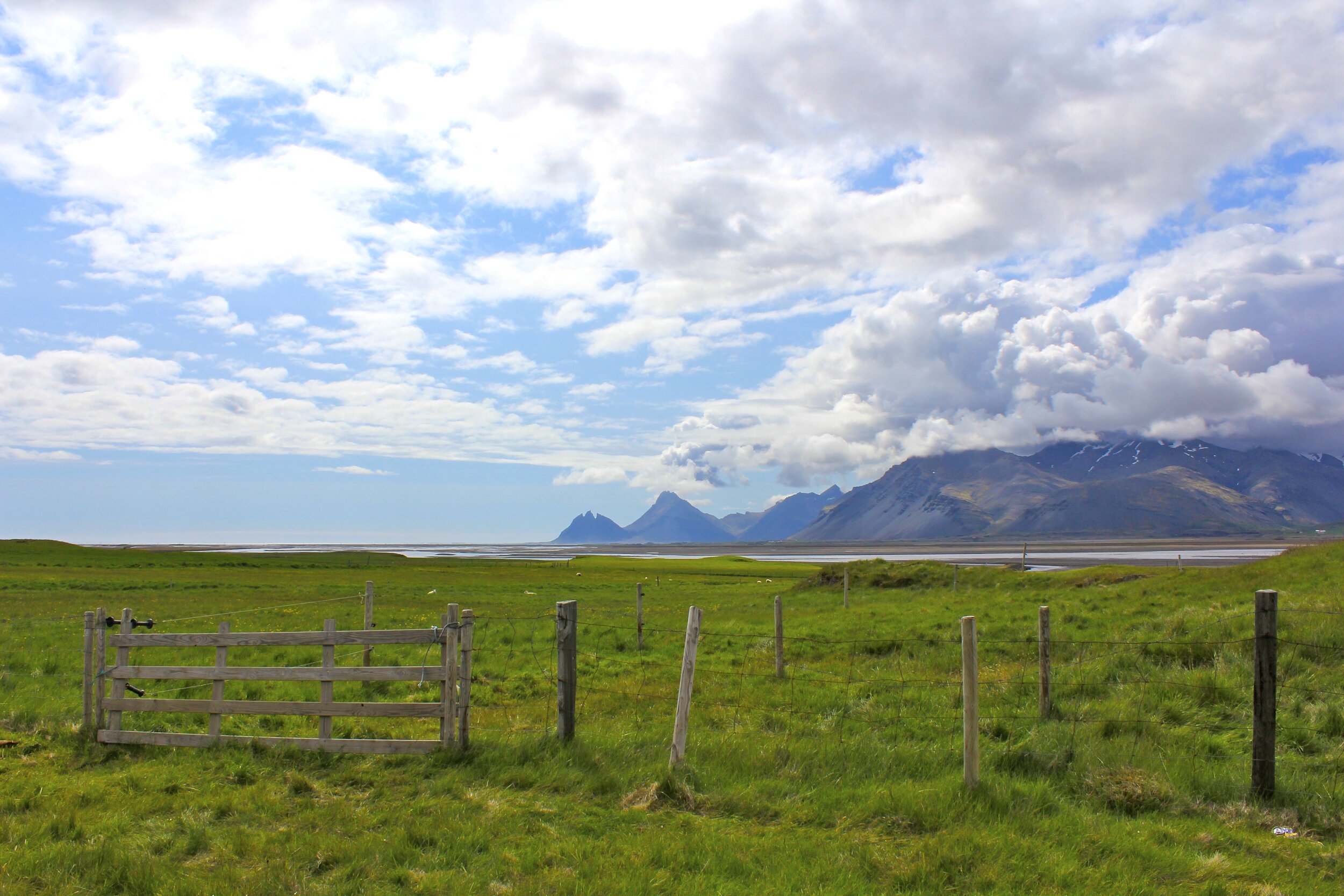


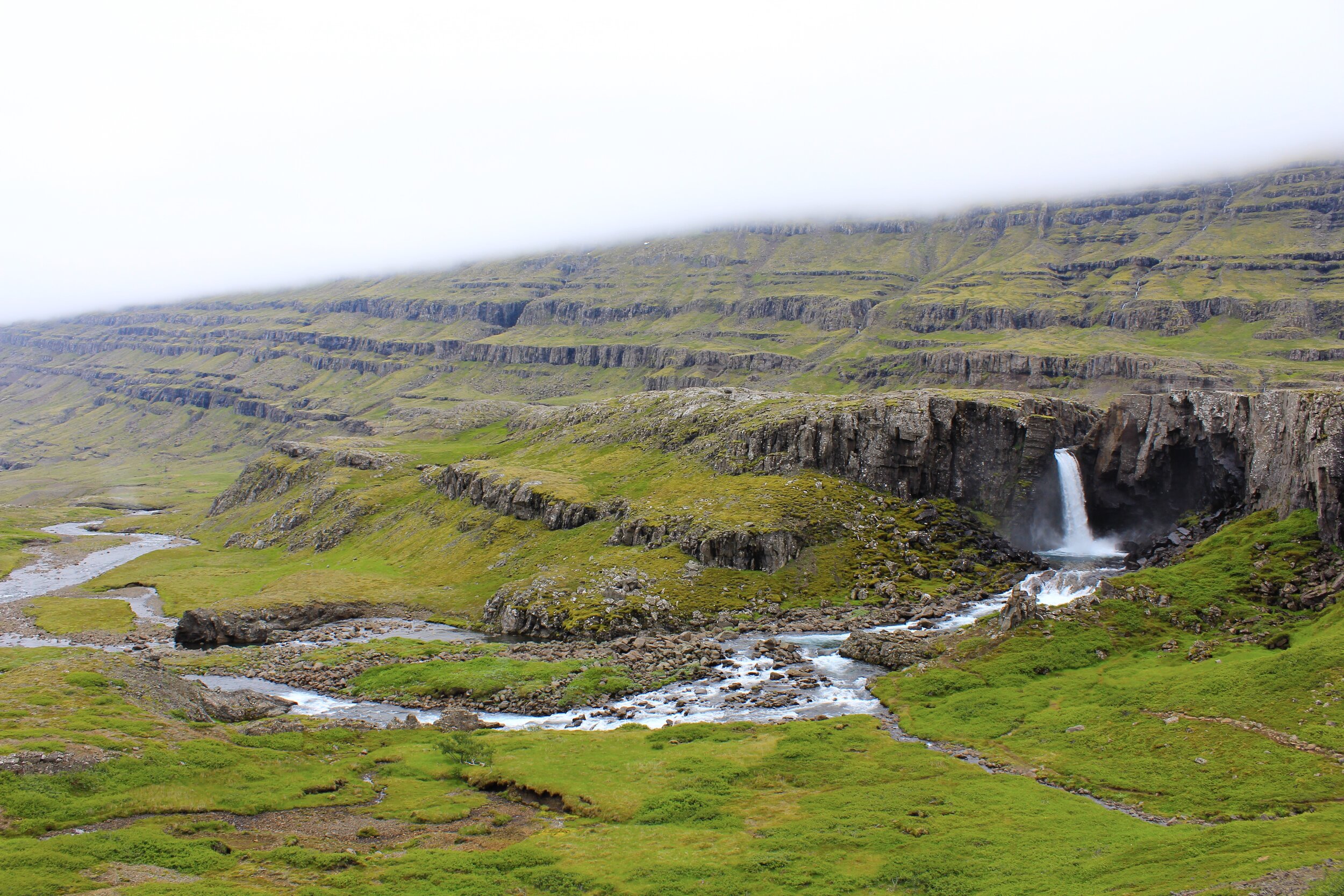

The north of Iceland is a wild, expansive area with few people, which makes the massive scenery seem all that much larger. Black volcanic plains, red soil with steaming geysers, immense gorges and waterfalls, and the infamous Grjótagjá Cave, where Jon Snow and Ygritte took their hot springs dip (for all you GOT fans out there), were almost too much to take in over the course of a day, but my trip was taking me closer and closer to the town of Akureyri, and beyond to the lands which were a big part of the reason I was so fascinated with coming to Iceland in the first place; the fabled Westfjords.
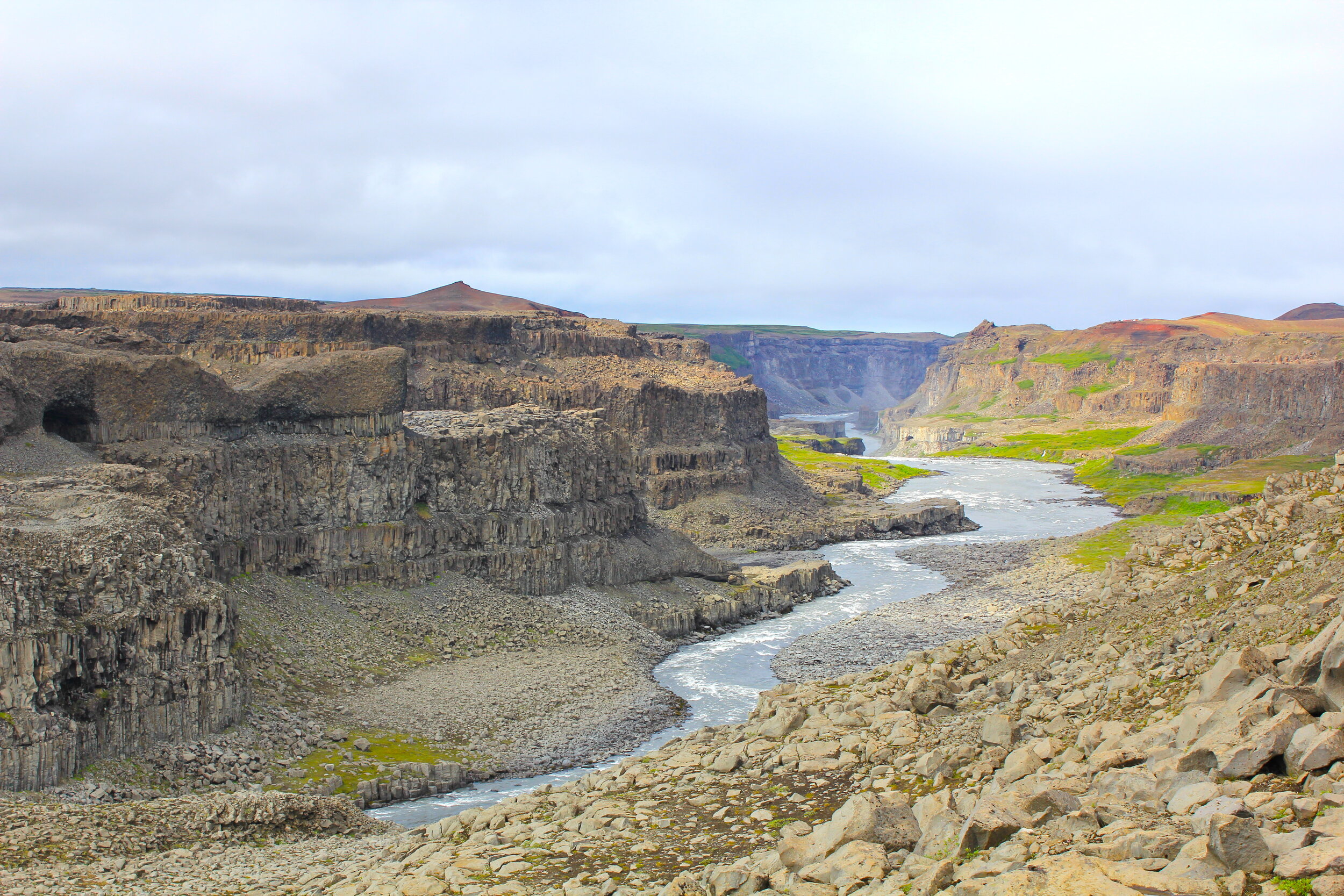






The Westfjords are the most mysterious and wild part of Iceland. Often skipped by tourists due the relatively poor road quality, the unpredictable weather, and the remoteness of the towns and villages on offer, I found the area to be a treasure trove of stunning fjord and mountain scenery, dark folklore and witchcraft history, and unique culinary experiences. Hills and mountains that look as if they’ve been carved with a butter knife by some looming giant rise up from alongside the winding fjord roads and create some of the most thrilling and visually spectacular driving I’ve ever experienced in all my travels.
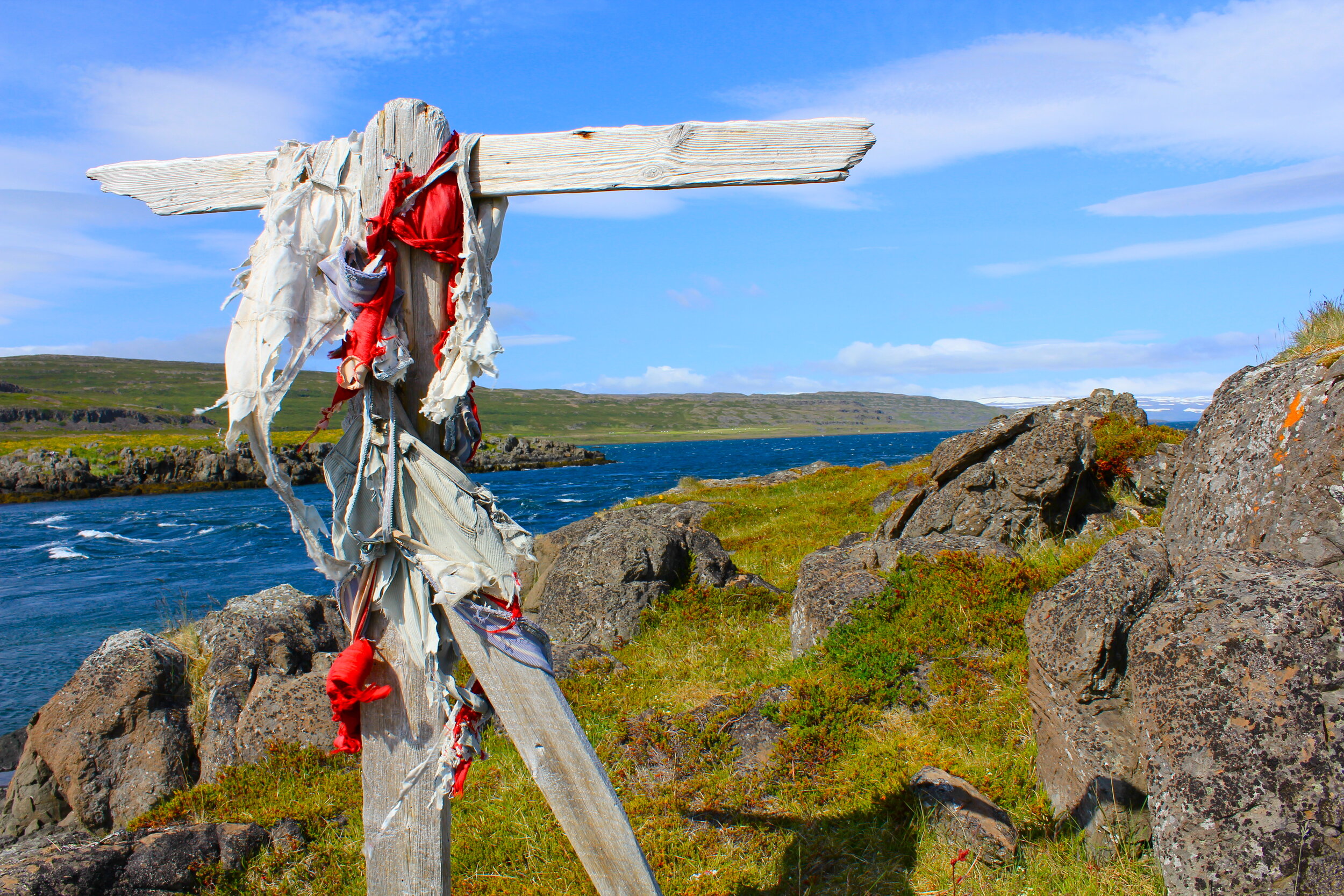




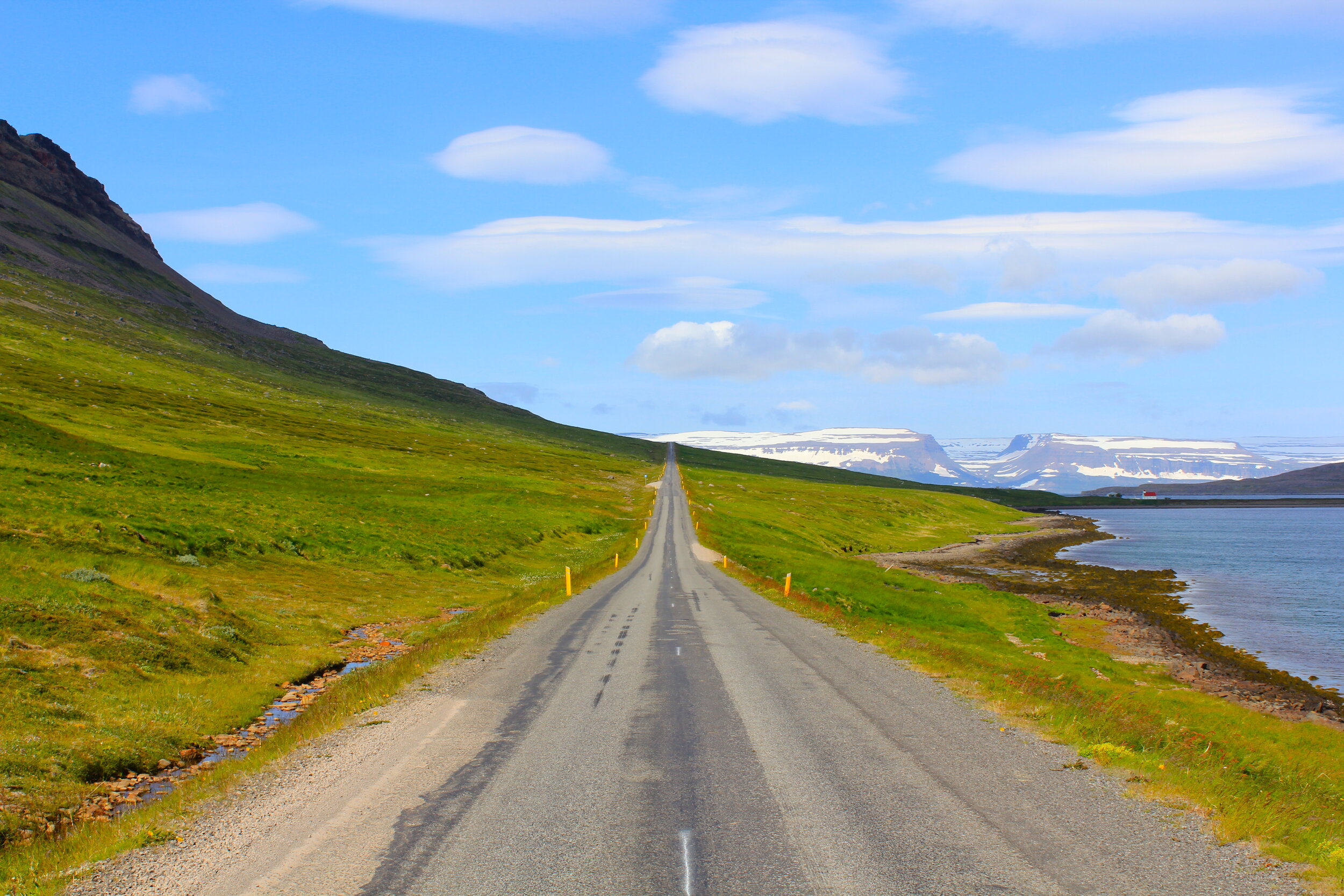

The towns of Hólmavík, Ísafjördur, and Patreksfjördur, and the wild and wonderful drives that connect them, are all remote and fascinating small towns that offer some extremely regional and rare experiences. From mussels on the back deck of a Sorcery and Witchcraft museum, to a rustic seafood dinner at communal benches in a 1700s tavern, to gazing upon wild Icelandic horses, to craft beer, puffin watching, waterfall hunting, and a general feeling of being a million miles from nowhere, the Westfjords and its towns/villages allowed me sink into a type of open, semi-lonely travel that I always crave.


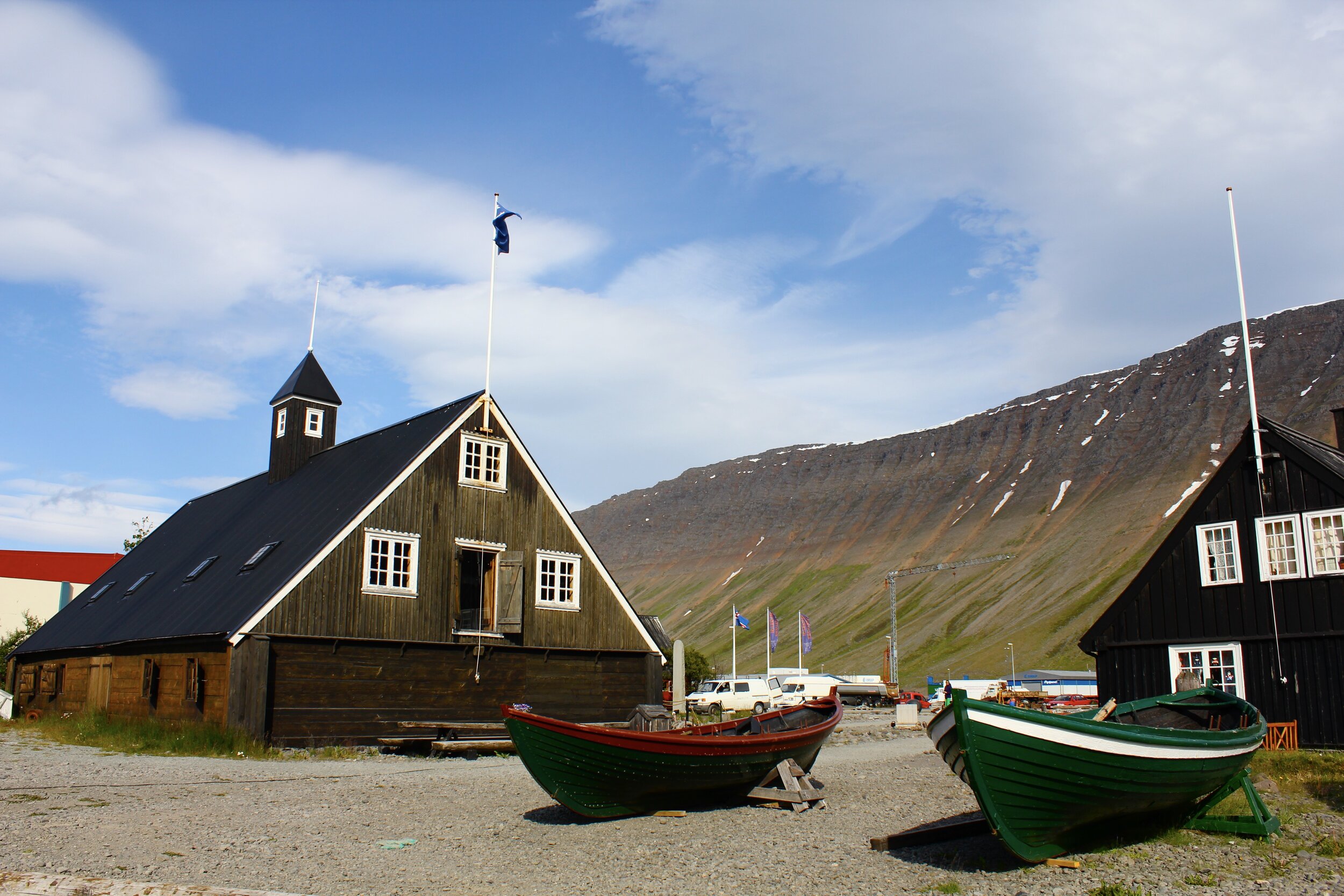



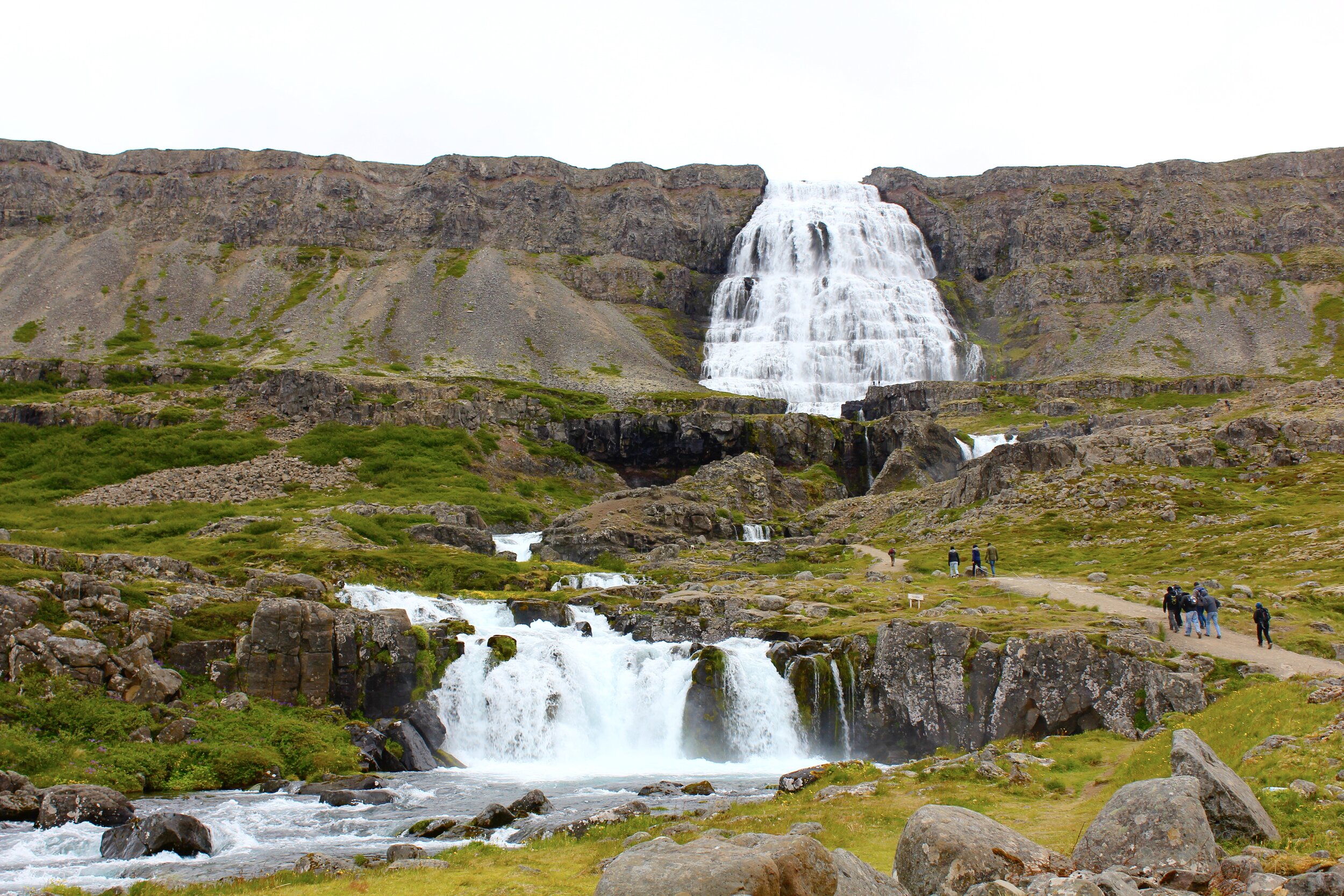
Driving along winding gravel roads through high mountain passes, alongside rundown mountain shacks and strange totem statues, I truly felt as if at any moment I would fall off the edge of the earth and ascend into the beyond. The tops of those mountains seemed to have an air of things ancient and forgotten.





Reading Icelandic tales and sagas each night on my trip, I’d imagined it could be a strange and savage land, which I was reminded of as I forcibly lay on my stomach on the precipice of the cliffs of Látrabjarg, lest I be blown off by the fiercest of winds. Crawling on my hands and knees, freezing, just to get a close-up glimpse of the rare Puffins nesting on rocks below the edge. As I lay there on the cliff’s edge, I was compelled to think of Hrafna-Flóki, the famous Viking who sailed to Iceland along with 3 ravens. What a wild place he must’ve found, yet captivated by its unique beauty and energy, he settled there. It’s truly a testament to the people who settled The Westfjords, and the people who still survive and live in this remote and wild place.
Leaving the Westfjords on the ferry from Brjánslaekur to Stykkishólmur felt bittersweet. The Westfjords were the Iceland of my dreams, yet I was heading to The Snaefellsnes Peninsula, which was the Iceland of Jules Verne’s dreams.
Staying in Grundarfjördur was a great base to explore this majestic peninsula. It was only a short drive to see one of Iceland’s most famous landmarks, the mountain Kirkjufell, and its neighbouring waterfall, Kirkjufellsfoss, which is a great stopping point for a bite to eat and a short wander. Many Icelanders believe that fairies, elves and trolls still inhabit secret places in the countryside, and when you see landscapes such as Kirkjufell, you can maybe understand why. Having Grundarfjördur as your home base also puts you in striking distance of Snaefellsjökull National Park. Being a slight literary geek, I was buzzing to see the volcano (and surrounding landscape) that was the inspiration for Jules Verne’s classic “Journey to the Centre of the Earth”. Add lava tubes, glaciers, and an extra-healthy dose of picturesque waterfalls into the equation, and it was settled in my mind that Snaefellsnes is well deserving of its fame.








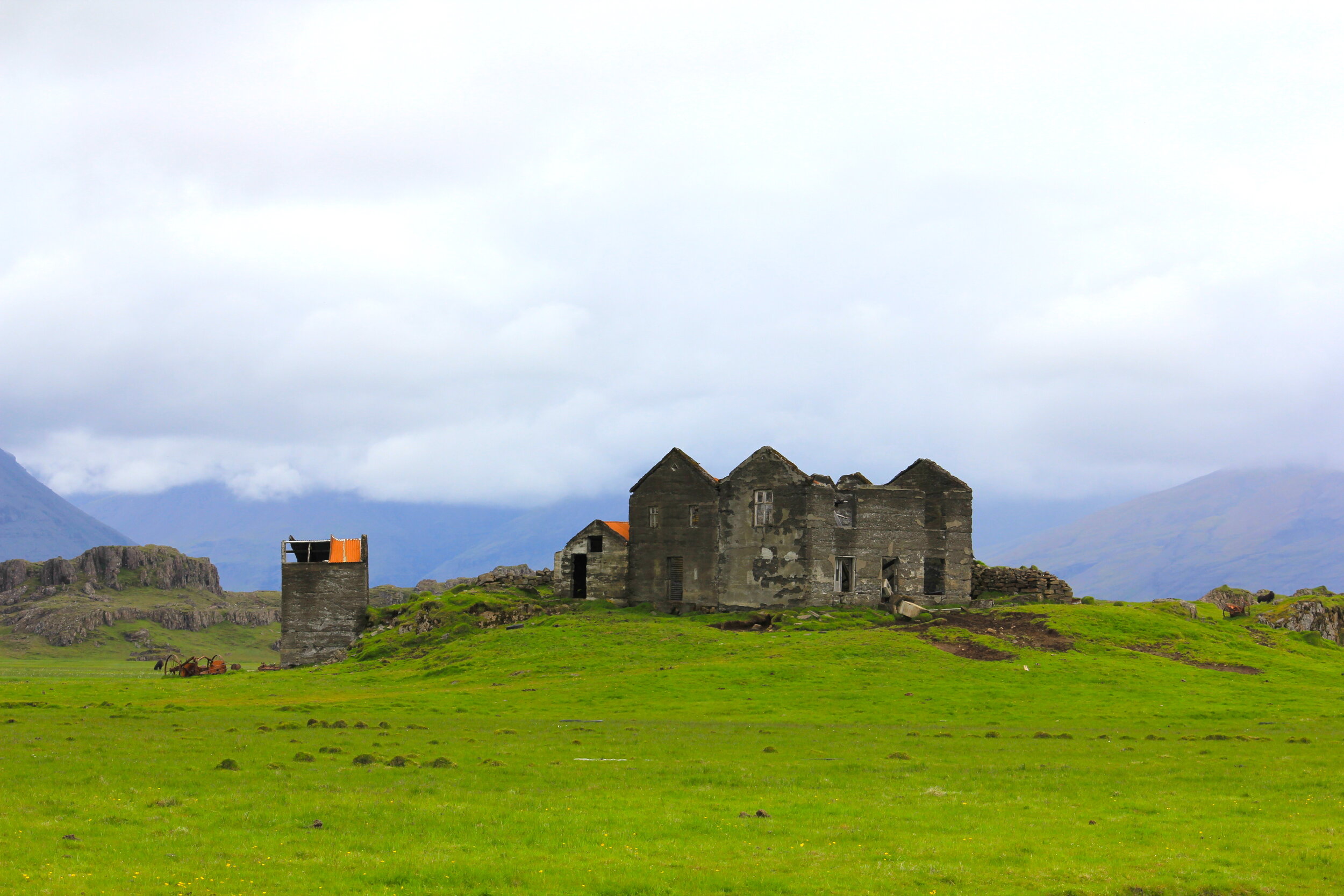
Leaving the wildness of regional Iceland behind and heading back to Reykjavík seemed like a sad turn. What all travellers discover though, is that Reykjavík, despite being a small city, has an abundance of unique riches to explore, both cultural and culinary. From beer halls converted from old biscuit factories (with its own library corner and barber), a music and art scene with a strikingly individual sense of artistic identity, distilleries tours, Parisian-style basement bars, a world-class symphony, and so much more, Reykjavík was a heady 3 days of eating, drinking, exploring, and enjoying the midnight sun. (*see the itinerary below for more details)
Despite being there in the height of summer, once I got out “in it”, Iceland truly felt like a forgotten land. A place to stretch your road-tripping wings. A landscape to wander in slow-motion and lose yourself in a cultural identity that feels both immensely familiar and at the same time completely alien. As I hopped my flight back to London, it washed over me that the last 2 weeks had confirmed the rumours created by my own consciousness, that Iceland: The Land of Fire and Ice, is one of the true frontiers of open, explorative travel.
All photos featured in this article are protected under © copyright. Roscoe James Irwin 2021
14 Day Road-Trip Itinerary
General Hints & Tips:
Car Hire: If you’re going to circumnavigate Iceland by car and want to see some of the more interesting sites, you’ll want to hire a 4-wheel-drive. Gravel and dirt roads are semi-common, as are flat tires and other little pieces of minor damage, so full insurance is a must in my opinion. Car hire (and petrol) is expensive in Iceland, so make sure you budget enough for those elements.
Petrol: As well as being expensive, petrol is sometimes scarce in the more regional parts of Iceland, so if you see a petrol station and you have anything less than a 3/4 of a tank, I’d recommend filling up. Also, most regional petrol stations in Iceland are self-service and un-manned, so you need to make sure you a have a credit card with a pin (not a zip code USA peeps) to pay for your petrol at the bowser.
Food: Like most things in Iceland, food (especially eating at restaurants) is expensive. I found that with being on the road all day, I would enjoy a good breakfast either in the town I’d stayed in or early on in the day’s drive, then hold out until dinnertime. You’ll want some snacks/fruit in the car though for those picturesque stop-off points throughout the day. Fish and seafood are the main staple of Iceland cuisine, and it’s often fresh and very good. Lamb is also widely farmed in Iceland so that’s another great option if you want the best the country has to offer. Alcohol is quite expensive, but there are some interesting local options in varying parts of the country that you’ll definitely want to try.
Hotels/Accommodation: Like everything else, hotels are expensive in Iceland. If you’re on a moderate budget, I’d suggest staying at guesthouse hotels (which are the most common in regional Iceland). They a slightly cheaper than a standard hotel, and sometimes the nicest, easiest option. They are almost always very clean and comfortable, and simply, but well appointed. (*Note: many guesthouses only have a sink in the room and a shared bathroom in the hall. If you don’t want to share, standard hotels are usually available, except in some very small towns). There are of course farm stays and house rentals, but they can start to get expensive if you’re on the road in Iceland for a little while.
Language: Most Icelanders speak very good English. It’s rare to find someone who doesn’t speak any (except maybe in very regional areas).
*Note: This itinerary is a road trip itinerary. It’s about maximising your you time on the road while taking in as many interesting sites as possible. You could spend months in Iceland checking out each waterfall, hike, cave, tourist attraction, etc… But Iceland is one of the greatest countries on earth to drive around, so this journey reflects that.
Day 1:
You’ll be flying into Keflavík Aiport (Iceland’s main international airport). Depending on what time your flight arrives, I’d recommend staying in Kevlavík for the night to rest up and start fresh the next morning. If you’ve picked up your hire car at the airport already, you can of course head to Reykjavík (about 45 minutes from Kevlavík International) and stay the night there before heading out. If you’re on a budget though, and don’t want to pay for the extra day’s hire on the car, then Kevlavík is a great option.
SEE & DO:
*The Reykjanes Art Museum is a great place to see some local art, and visit the maritime and heritage museum (which is part of the same location).
*If you happen to be a fan of Icelandic music, then you could also head to The Icelandic Museum of Rock n’ Roll. It’s a small museum, but has some interesting interactive exhibits and tons of fun info about the history of Rock and Pop in Iceland.
STAY:
There are many fine little hotels, guesthouses and B&Bs in the Kevlavík area. I recommend Guesthouse 1x6. It’s a family run guesthouse with its own geothermal garden spa; and the rustic timber guest room interiors were designed by a local artist using mostly driftwood and salvaged tiles (*Note: bathroom is communal). It’s nicely located near the water and very close to the Reykjanes Art Museum. The couple who run the guesthouse are very lovely and cook up a great breakfast, and will even drop you to and from the airport if you request it (this is especially helpful if your going back to the airport in the morning to pick up your hire car).
EAT/DRINK:
Just down the road from Guesthouse 1x6 and the art museum, is Kaffi Duus. A relaxed, maritime-inspired pub that sits on the marina edge. I’d recommend the Fish Trio (with shrimp and lobster) and a frosty pint of Gull beer. The perfect meal for your 1st night in Iceland. If you’re feeling a little more daring, you could try the shark, or the mink whale perhaps (though personally I couldn’t bring myself to do it). They also have a selection of local Icelandic craft beers by the bottle.
Day 2:
You’ll either be heading out from Kevlavík or Reyjavík. Either way, you’ll be heading south-east out of the capitol region on Route 1 (the Ring Road). This day’s itinerary is based on getting to the town of Vík (or nearby) on the south-east coast.
SEE & DO:
*The first big stop will be Seljalandsfoss. A beautiful waterfall that you can actually walk under and behind. There is also a hike up the hill to the top of the waterfall that I would recommend. At the top you can get up-close views of the falls and the river behind it.
*Next up you will be heading to the black sand beach of Reynisfjara (near the town of Vík). Take road 215 off the main ring road to head down to the beach area. There are jagged spires of rock jutting out of the sea, and the basalt columns along the cliff are a beautiful and interesting sight. If you are there in summer, you might be lucky enough to see some Puffins nesting on the cliffs.
STAY:
For a truly remote Icelandic overnight stay, I’d recommend Mid-Hvoll Cottages. The cottages are a small backtrack from Vík and the black sand beach, but it’s well worth to be in a little timber cabin with beautiful views of Eyjafjallajökull Volcano as well as Myrdalsjökull Glacier.
EAT/DRINK:
There is no restaurant at the cottages of course, but there are some basic cooking facilities inside, so I’d suggest stocking up on some meats, cheeses and bread while passing through Vík, and then have yourself a little feast on the front patio of your cottage while taking in the spectacular surrounds.
Day 3:
Today’s drive will take you through some strange and wonderful landscapes. The aim should be to get to the area around the town of Höfn.
SEE & DO:
*Along the stretch of highway north east of Vík, you be treated to some amazing scenery that changes and morphs much more rapidly than you’d imagine. Stop and take in the countless rock piles (cairns) left on the hills and plains to the left of the highway, and marvel and the strange, mossy, green mounded landscape beyond.
*As you head further north, you’ll hit the wondrous glacial lagoon known as Jökulsárlón. You can’t miss it, it’s right off the ring road. A massive glacier feeds the lagoon and there is always an abundance of icebergs and jagged formations in the water. Stop and go for a decent walk around this amazing arctic feeling location.
STAY:
If you prefer a small town atmosphere, I’d stay in Höfn for the night. However, I’d recommend staying at Gerdi Guesthouse (or one of the adjacent houses). It’s a semi-isolated farm-style property in the Vatnajökull area, not far past Jökulsárlón, and right off highway 1. You’ll get a nice regional Iceland feel staying here and a chance to interact with other road travellers.
EAT/DRINK:
If you’re staying at the guesthouse, then you’re eating there! They use almost all local produce from the area, including their fish and lobster, lamb, eggs, and potatoes. The homemade Icelandic fish stew is very good, as is the lamb of the day, and i’d follow it all up with a bowl of skyr with cream and berries (a classic Icelandic dessert). A crisp Viking beer (or 2) is a must when chatting with other guests about their road-trip adventures.
Day 4:
Today we’ll be heading from Gerdi Guesthouse to scenic Seydisfjördur. This day is a chance to really get into some landscape and coastal photography. As you head north the scenery becomes even more epic. In this part of the the country, Highway 1 runs along the coast and weaves in and around some beautiful hills and mountains, so there is ample opportunity to pull over and take some photos of the towering mountains with their mirrored reflection on the calm water.
SEE & DO:
*Just relax and enjoy the drive and take some stunning photos. If you’ve seen enough fjord-like scenery, there’s always the option to get off highway 1 and try some more rugged mountain driving. Road 939 (which connects to the 95), or taking the 95 off highway 1 will both eventually get you to the town of Egilsstadir, which is where you reconnect with the 1. Instead of re-joining the 1 though, we are going to head east on the 93. This is the stunning road that leads down to Seydisfjördur. If you remember the downhill skateboard scene in ‘The Secret Life of Walter Mitty’, this is that road. You’ll see two beautiful waterfalls on the way down this winding road: Fardagafoss and Gufufoss.
*If you happen to be a fan of unusual locations, in 2010, an authentic replica viking village was built near Höfn for a film that never ended up being made. The battered, unkept buildings are still there and worth a look if you feel like visiting a viking ghost village (that was never actually a viking village….so…). The village is called Stokksnes and it’s at the foot of Mount Vestrahorn. There is a small road to the right off Highway 1 about 15 minutes from Höfn, near the Almannaskard lookout.
STAY:
Seydisfjördur has a number of simple, but great guesthouse sleeping options. Two of the most unique are probably the Hafaldan Old Hospital Hostel, and The Old Apothecary.
EAT/DRINK:
*For dinner, The bistro at Skaftell Center for Visual Art is an interesting and relaxed place to go. It’s an art centre for exhibitions, education, and residency programs. You may get lumped on a table with strangers (as their seating is limited and casual), but that’s half the fun of it. The menu is simple pub food, but the atmosphere is fun and the artwork and books lining the walls make it a unique dining experience.
*For something a little more elevated than the bistro fare at Skaftfell, try Nordic Restaurant. It’s right in town and near the rainbow road (which is fun to check out). The menu is a combination of European and Icelandic cuisine, and they source many of their ingredients from what’s in season in the local region.
*Right near Nordic, is Kaffi Lâra El Grillo Bar, and this is the place to have some drinks after dinner (or you can eat dinner there; they are also a BBQ restaurant). It’s in a 100 year old timber house, and has a great selection of craft beers, including their house lager, which still uses the old recipe of the owner’s grandfather (that apparently he was given in a dream by the building’s original owner, Lara). They have live music and a fun, slightly rowdy, but friendly atmosphere. A must for anyone wanting to have a local “hang”.
Day 5:
Heading west from Seydisfjördur across to Akureyri (the main town in Northern Iceland), you’ll be treated to some of the most diverse scenery in all of Iceland. It’s a big day of driving, but well worth it.
SEE & DO:
*After heading out of Seydisfjördur and reconnecting with Highway 1 to head west, it won’t be long until you will reach a photo opportunity turnout (you can’t miss it). Here you can marvel at the flat, black volcanic plains from a high vantage, with the eerie grey mountains in the distance.
*Next up is a visit to the mighty Dettifoss Waterfall. One of Europe’s most powerful waterfalls, it was featured in the film ‘Prometheus’. Now, there are two ways to reach Dettifoss, the 864 and the 862. If you’ve taken my recommendation and hired a 4x4, then I suggest taking 864. It’s a bumpy dirt/gravel road, but it has the superior views of the area and is the recommended route for photographers. If you are not in a 4x4, I’d suggest taken 862, which is a friendlier drive. There’s parking either way, and the hike past the massive gorge to the edge of the falls is really quite awe-inspiring.
*Back on Highway 1 heading west, you’ll reach Hverir, a geothermal location famous for its boiling mud pits and steaming geysers. It’s right off highway 1, so it’s hard to miss. There’s parking there and walking around the strange, alien-esque site is fascinating. Make sure to have your camera with you as this is one of the more unique locations in Iceland.
*One of the most sought after spots to explore in the Lake Myvatn area, is Grjótagjá cave. Made famous by its use in Game of Thrones, it’s now a popular spot for fans and nature lovers alike. Off highway 1, you’ll take 860 south and eventually find the turnout for the cave. It looks as if it’s just a small hole in a pile of rocks, but upon descending through the hole, you arrive in a beautiful underground thermal pool. Last I checked swimming isn’t allowed (and the water is possibly too hot anyway).
*From the cave, my recommendation would be to head south on 848. This winds you around Lake Myvatn, same as Highway 1 to the north, but is a less-busy road and gives you access to Skútustadagígar, which is a fantastic photo opportunity location for the Lake area. 848 eventually reconnects with Highway 1, so there’s no major detour involved.
STAY:
There are of course a number of great places to stay right in Akureyri, and if you’re looking for a night out, that might be your best option. However, if you’re looking for a more regional Icelandic experience, I’d suggest staying at Skjaldarvík Guesthouse. It’s a beautiful farm-style property in the countryside outside of Akureyri with a very good restaurant and a prime fjord-side location.
EAT/DRINK:
If you’re staying at Skjaldarvík, the restaurant is very good. Their menu changes, but always has a homemade, local feel to it. It’ll be hard to go wrong. As a fun addition, they will happily give you the recipe of any dishes you liked if you ask (which much to my disappointment, I only discovered after I’d left).
Day 6:
Today is a big one! The drive from Akureyri in the north, to Hólmavík in the stunning and wild Westfjords. This is what most tourists miss. They head down Highway 1 and continue without braving the winding roads of the Westfjords. The Westfjords are part of ancient Iceland. Some of the best drives in the world are the roads that wind around these extensive fjord teeth and up along the rough mountain passes.
SEE & DO:
*This is a big photo day. You’ll see some of the most stunning and immense open scenery in all of Iceland, both in the North, and in the Westfjords. The driving time is about 4 and a half hours through the inland, or closer to 6 if you take the more coastal route (82/76/744) which eventually reconnects with Highway 1. Once you take route 68 north into the Westfjords, you’ll want plenty of time to enjoy the scenery, so add some extra time for that. If the weather is bad, you’ll need to slow right down as well on the windy fjord roads.
*Once in Hòlmavík, I suggest grabbing your camera and having a walk around. It’s a strange, yet pretty little town and has some interesting, slightly rough-around-the-edges viewpoints for taking photos. Walking up to the church on the hill makes for a pretty view of the town.
*A must in Hólmavík is the Icelandic Sorcery and Witchcraft Museum (Run by a local Sorcerer). Although, after a big day of driving and photography, I’d suggest saving this for the following morning, especially if you want to eat some of their mussels on the back porch of the museum.
STAY:
There are few options right in Hólmavík. Mostly just quaint little guesthouses and room rentals. Most are about the same, so it’s dealer’s choice on this one.
EAT/DRINK:
*Pretty much the only option in Hólmavík is Cafe Riis. It’s rustic, cosy timber setting is a nice atmosphere after a big day of driving. Their menu is pretty simple; they mostly do pizzas (which if you’re in the mood for, have the lobster tail pizza), but they do have some main dish options. I suggest the fried cod chins if you’re in the mood for something a little different and inherently Icelandic.
*The restaurant that’s attached to the Sorcery museum is a great place to get some delicious mussels. If feels like a shack restaurant looking out on the harbour. I’d suggest doing this the following morning though for brunch after you’ve explored the museum.
Day 7:
Today it’s the drive from Hólmavík to Ísafjördur, which is one of my favourite drives in the world. There are no roads through the inland in this part of the Westfjords, so you follow each and every fjord in and around, and it is absolutely stunning.
SEE & DO:
*Drive! Just drive! It’s a stunning part of this road-trip journey and there a plenty of places to stop, take some pictures, have a snack, and just marvel at the remoteness and massive beauty on offer.
STAY:
*In Ísafjördur, the unique design and rustic-yet-slightly-kitsch decor of ‘Tangs’ guest apartment is a fantastic option if you feel like some space and comfort.
*For a more classic hotel room, both locations of Hotel Ísafjördur (Horn & Torg) are quite nice.
EAT/DRINK:
*(Mussels at the Sorcery and Witchcraft Museum - Brunch)
*In Ísafjördur, head to Dokkan Brugghús, the only craft brewery in the Westfjords. This relatively new family business is throwing down some fantastic and interesting beers and is well worth a visit. And what a perfect way to cap off one of the great drives in the world.
*An absolute must while in Ísafjördur, is dinner at Tjöruhúsid. Housed in a centuries old timber tavern tucked away at the bottom of the dockyards, this seafood smorgasbord will be a highlight of your trip. There’s only one sitting, with a set price, and it’s all at communal timber tables, and the food is presented in giant pans right onto the table. The main chef is a master fish cook and hero of the Westfjords. From chowder, to cod, monkfish, arctic char, salmon (all done in varied and delicious ways), to delicately pan-fried cod-chins, the whole experience is a true gastronomical delight. (*Note: this restaurant does not run year-round, so check online to make sure you don’t end up disappointed. Bookings are essential!)
Day 8:
The journey from Ísafjördur to Patreksfjördur is another magnificent one. Rugged and mysterious mountain passes, immense waterfalls, and all the wild countryside you’ve become accustomed to in the Westfjords.
SEE & DO:
*One of the main stops on this particular drive is Dynjandi, a massive waterfall with relatively easy access from route 60. It’s actually the biggest waterfall in the Westfjords, and the word Dynjandi means thunderous in Icelandic, and you’ll understand why when you hear this beast of a waterfall in full roar. There are 6 smaller, lower waterfalls to explore and hike past as you head to the top of the trail up near the main falls.
*Látrabjarg is a promontory area with massive cliffs that house millions of birds during the summer months. It is the far western point of Iceland, so as you look out over the ocean (with a sunset if you’re lucky), you are looking straight to Greenland. It’s a remote and beautiful spot, and the gold standard when it comes to viewing the beautiful arctic puffins up close. Keep in mind, the road there can be rough and bumpy, so probably only head out to Látrabjarg if you are in a 4x4.
STAY:
*I recommend staying in Hotel West in Patreksfjördur. It’s maybe a little on the sterile side (like many Scandinavian hotels), but it’s well located as well as clean ,modern and comfortable.
*Guesthouse Stekkaból also comes highly recommended (though I haven’t stayed there). Both hotels are very close to each other.
EAT/DRINK:
*Stúkuhúsid is a beautiful, quaint little restaurant with fjord views that has a simple, but delicious menu and high quality produce. I had the cod (no surprise there, it’s Iceland) and it was delicious. Patreksfjördur is a small town, and dining options minimal, so this place is a great choice (and it’s right down the road from Hotel West).
Day 9:
Today you’ll be travelling from the Westfjords to the Snaefellsnes peninsula. Specifically from Patreksfjördur to Grundarfjördur. We’ll cheat little bit and put the car on the ferry, as the journey by road can be long and tiring.
SEE & DO:
*Drive south to Brjánslaekur which is where Ferry Baldur leaves from. Make sure you get there in plenty of time, or preferably book, as car spots can fill up. The journey across Breidafjördur Bay is quite beautiful, and it’s a great chance to relax outside the car for a few hours.
*The ferry will arrive in Stykkishólmur, which is a fantastic little town with beautiful old house and an amazing church building. I suggest taking some time to explore the town and enjoy what is has to offer. The Library of Water is a fascinating display to visit; 24 glass tubes containing melted ice from glaciers around Iceland.
STAY:
*For a central stay, Grundarfjördur Bed & Breakfast is a clean and comfortable option.
*For a more picturesque stay, your destination should be Sudur-Bár Guesthouse. This farm property is about 10km from Grundarfjördur and is the perfect place to get some peace and quiet and relax before heading out on your Snaefellsnes adventure the following day.
*For a unique stay, try The Freezer Hostel and Cultural Center. A former fish processing factory, it’s a little further ways down the peninsula; but with live music performances, a vibrant common room with vinyl records and a bar, it’s a fun choice for people wanting to engage with other travellers and see some local theatre/music. (*Note: performances mostly happen in the summer months).
EAT/DRINK:
*Bjargarsteinn is the probably the best restaurant in town. Elevated fare and good cocktails make this place the go-to spot in Grundarfjördur. The quality of their produce is fantastic and the presentation of the food is top notch.
Day 10:
Today is your day to explore The Snaefellsnes Peninsula. The dramatic scenery will definitely not disappoint even the most well travelled road-tripper. Just to simply drive around the peninsula is a treat, however, there a some essential stops and experiences to enjoy.
SEE & DO:
*Snaefellsjökull National Park. Just driving through this area is fantastic, but I’d recommend a guided hike on the volcano glacier. Vatnshellir cave is also a must. They have guided tours of a subterranean lave tube that’s over 8000 years old.
*Kirkjufell (and its neighbouring waterfall) is probably one of the most famous and photographed landmarks in all of Iceland. It’s just out of Grundarfjördur so it’s an easy stopover on your way to many other sights (including Snaefellsjökull)
*The basalt columns at Gerduberg Cliffs are well worth a look
*The mineral spring at Oklelda Farm is a popular spot to visit. The waters are said to have healing properties, so take a sip from the public tap.
*The lone black church of Budakirkja is surrounded by a dreamlike lava/grass terrain that you can explore at your own pace.
*Arnarstapi Village is a very old fishing town with beautiful surrounding scenery (and our destination for the evening).
STAY:
Arnarstapi Cottages is a property right near a tiny village with beautiful coastal views. The individual cabins have patios with mountain views.
EAT/DRINK:
Head to Mönsvagninn and grab some legit fish and chips. If the weather is nice, you can take it down to the coast and enjoy beautiful ocean views while digging into some Icelandic cod.
Day 11:
Today you’ll be heading back to Reykjavík to enjoy a few days in the city (which is not quite enough time, but just enough, if you catch my drift).
SEE & DO:
Get to Reykjavík, but enjoy the last of the big drives. The scenery from Snaefellsnes back to the capital region is nothing to scoff at, so take in the sights, grab a few more beautiful mountain photos, and relax on this moderate length drive.
STAY:
I’d highly recommend Rey Apartments in Reykjavík. Beautifully appointed apartments right in the sweet spot of where you need to be to make the most of the city.
EAT/DRINK:
Nothing will settle you into city life more than dinner at Snaps. In a quiet street not far from Rey Apartments, you can tuck into some mussels or a steak while enjoying a well-earned glass of beer (followed by a relaxing wine, followed by a relaxing brennevín, followed by….)
Days 12, 13 & 14
These 3 days should allow you to take in a lot of what Reykjavík has to offer. Reykjavík is a modern, cultural city, so there’s so much to see, do, eat, drink, etc…
SEE & DO:
*A must for any Iceland visitor is a trip to the Blue Lagoon. This outdoor, geothermal spa is a marvel to behold. A massive, natural, vibrantly blue, lagoon spa where you can relax and revitalise in the mineral rich waters. Make sure to scrape some silica/algae mud off the rocks and give yourself a natural mask. (*Note: Blue Lagoon is about 45 mins drive from Reykjavík city. Tickets can be bought online or at the lagoon itself).
*Take a half-day trip to Gulfoss. One of Iceland’s most famous waterfalls, yet no so convenient to get to when you are on the ring road circuit. It’s a perfect distance though to enjoy as a short day trip from the city.
*One of the musts for any whiskey lover, is a tour of the Eimverk Distillery. Here’s you can check out Flóki; An Icelandic single malt named after Hrafna-Flóki, the viking famous for sailing to Iceland with 3 ravens to guide him. The distillery also makes award-winning Vor Gin and Víti Aquavite.
*Iceland has a world-class symphony orchestra based in Reykjavík, so if you see they are playing a concert while you are in town, get on down to Harpa Concert Hall to see some fantastic orchestral music.
*Be sure to visit the most famous church in Reykjavík, Hallgrímskirkja. It’s an architectural wonder that’s structure was based on the mountains, glaciers, and rocky landscapes of Iceland.
*Head to Reykjavík Record Shop to dig for some rare and re-released vinyl.
*Hit the Maritime Museum, the Saga Museum, the Reykjavík Art Museum, and the National Museum of Iceland.
*Check out the street art around the Old Harbour area.
EAT/DRINK:
*Vínstúkan Tíu Sopar is a charming basement wine bar right in the heart of Reykjavík. Interesting wines from small producers and high quality charcuterie round out a very fun bar experience. (There’s a piano in there as well. Sometimes they’ll have musicians playing there which gives it a very Parisian feel).
*For a unique environment for a few beers and a burger, Head to KEX. It’s an elevated gastro pub and hostel inside an old converted biscuit factory. There’s a barber on hand, and a library corner where different types of gigs happen (the night I was there they had a Jazz hammond combo). It’s got vibe!
*Make sure to get a white russian at Lebowski Bar; Reykjavík’s infamous Big Lebowksi themed bar. But know this, they have about 24 different variations of the white russian, so be prepared. A must for all fans of “The Dude” and the Coen Bros.
*Dillon whiskey bar is a rustic, energetic place to go for a drink. They have over 170 whiskeys and there’s often live music in their very cool top floor attic bar/club.
*ÓX. This is for the high-flyers and lovers of inventive cuisine. It’s a private style restaurant hidden behind another restaurant that serves up super unique fine-dining. It’ll awaken your senses…. And crush your bank account (but it’s probably worth it).
*For a yummy and hearty breakfast or brunch, head to Bergsson Mathús.













